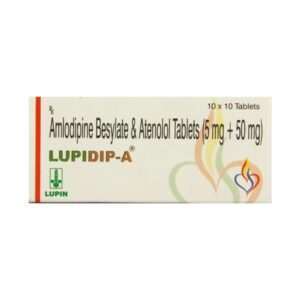AMLODIPINE + BENAZEPRIL
Amlodipine: Amlodipine is a drug belonging to the calcium channel blocker class. It is primarily used to treat high blood pressure and certain types of chest pain known as angina. The drug works by inhibiting the influx of calcium ions into vascular smooth muscle cells and cardiac muscle cells. By doing so, it relaxes and widens the blood vessels, reducing blood pressure and increasing blood flow to the heart muscle.
The usual starting dose of amlodipine for adults is 5 mg once daily, which can be increased to a maximum of 10 mg if necessary. For angina, the usual dose is 5-10 mg once daily. The drug can be taken with or without food.
As with any medication, amlodipine has potential side effects. Common side effects may include swelling in the ankles or feet, dizziness, flushing, headache, and fatigue. Some individuals may experience more serious side effects such as rapid or pounding heartbeat, severe dizziness or fainting, liver problems, or allergic reactions. It is important to seek medical attention if any of these occur.
Amlodipine may interact with other medications, including certain antibiotics, antifungal drugs, and HIV/AIDS medications. It is therefore important to inform the healthcare provider of all medicines being taken before starting amlodipine.
It is crucial to take amlodipine as prescribed and not to stop the medication suddenly without consulting a healthcare professional. Regular blood pressure checks and monitoring for any side effects are recommended during treatment.
Benazepril: Benazepril is a medication commonly prescribed to treat hypertension (high blood pressure) and heart failure. It belongs to a class of drugs known as angiotensin-converting enzyme (ACE) inhibitors.
The mechanism of action of Benazepril involves blocking the action of ACE, an enzyme that plays a key role in the production of a hormone called angiotensin II. Angiotensin II causes blood vessels to constrict, leading to increased blood pressure. By inhibiting the action of ACE, Benazepril reduces the production of angiotensin II, resulting in the relaxation and widening of blood vessels, thus lowering blood pressure.
The usual starting dose of Benazepril for hypertension is 10 mg once a day, which can be increased to a maximum dose of 40 mg per day. For heart failure, the starting dose is typically 5 mg once a day, which can be increased to 20-40 mg per day.
As with any medication, Benazepril can have side effects. Common side effects may include dizziness, headache, persistent cough, fatigue, and decreased renal function. Some individuals may also experience allergic reactions, such as rash, itching, or swelling. It is important to seek medical attention if any severe side effects, such as difficulty breathing or chest pain, occur.
Benazepril is generally considered safe and effective when used as directed by a healthcare professional. However, it is important to take the medication regularly and follow up with regular blood pressure checks to ensure optimal control of hypertension or heart failure.

